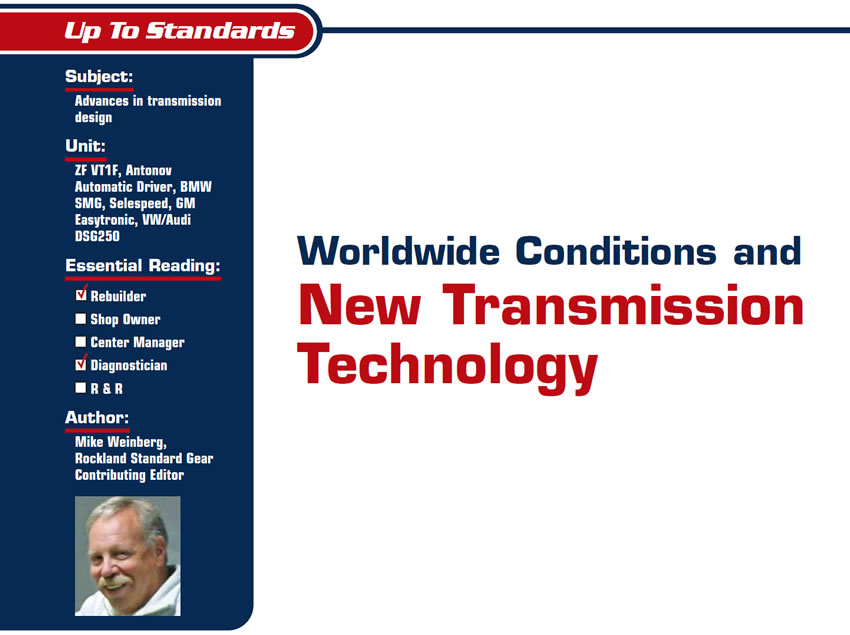Japanese Transmissions, American Cars
In the past, manufacturers of low-volume vehicles such as Rolls Royce and Jaguar used GM transmissions and A/C systems rather than design and develop their own. The trend has enlarged and continued so that the automakers looking to cut costs and increase efficiency are relying more on their tier-one suppliers to design and develop complete components such as transmissions and transfer cases. This has created a growth in units of a common design now showing up in many different vehicle platforms, from U.S.-built to imported brands.
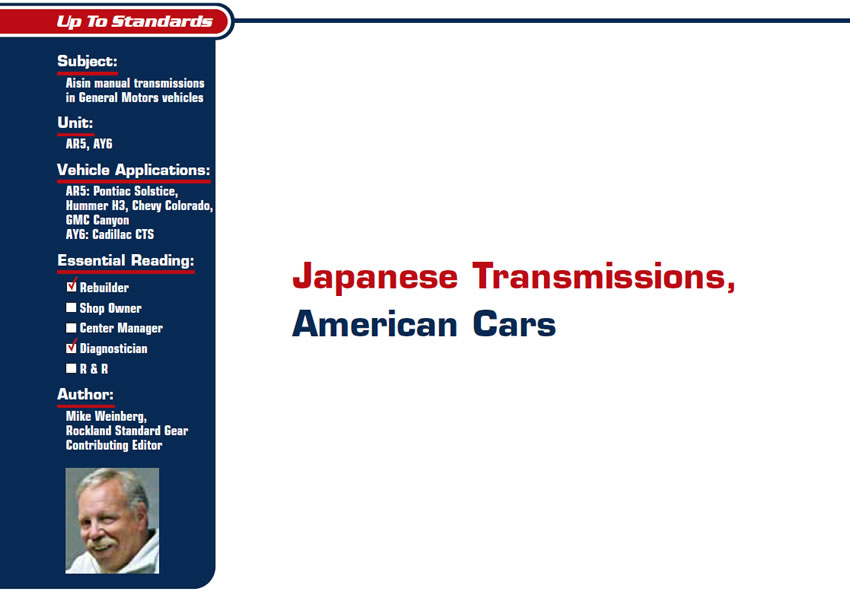
Why Doesn’t It Shift Correctly?
The first step to any diagnostic solution is to understand the theory of operation of the components involved in the problem and how they relate to each other. What is involved in making a shift with a manual transmission? The clutch set and related components (hydraulics, pilot bearing, release bearing, motor and body mounts etc.) and the transmission internal components and shift mechanism.
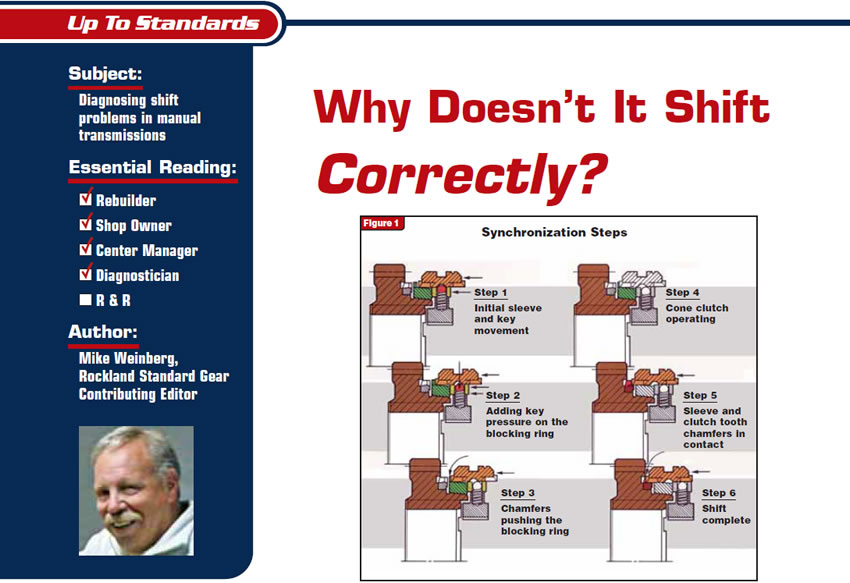
Prime Cuts – New Technology for Ring and Pinion Gears
Every shop in this industry is working hard to increase the volume of its business and the percentage of profit. Repair and diagnosis of automatic and manual transmissions and transfer cases are generally deemed to be the core of the business. Clutch replacement, driveshaft work, CV joints and wheel bearings are common sale items, but many shops neglect differential work as a profit center.
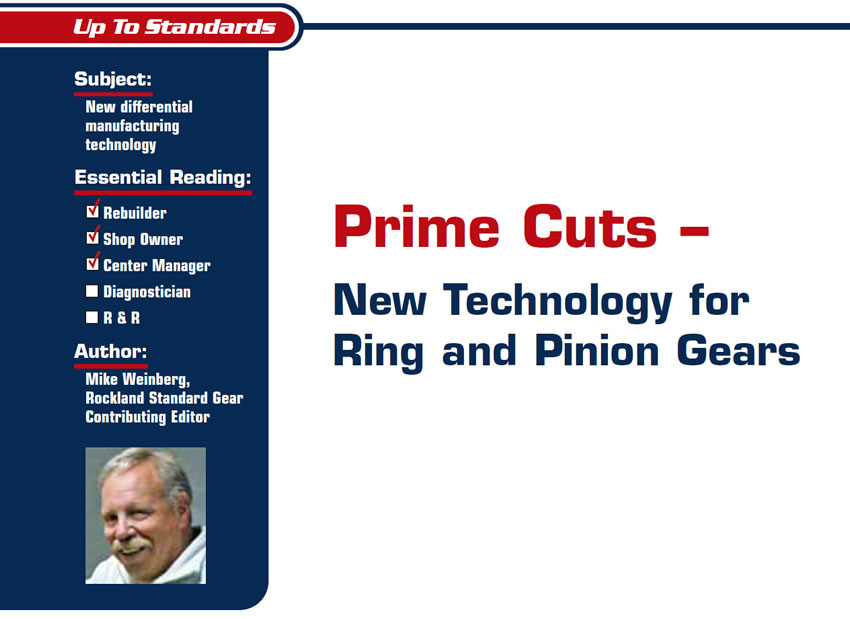
Searching for Identity
Identification of the vehicle and unit you are working on is the beginning of doing the job correctly. It is getting increasingly difficult to obtain the correct information and even to locate a service manual or Internet site.

Repairing the New Venture 261 & 263 Transfer Cases
For the 1999 model year, GM introduced the new Chevrolet Silverado and GMC Sierra models of pickup trucks. As part of the upgrade of these models, New Venture Gear designed a new series of transfer cases, the NV 261 and 263. These transfer cases are basically a heavier-duty version of the NV 241 transfer cases used before 1999.
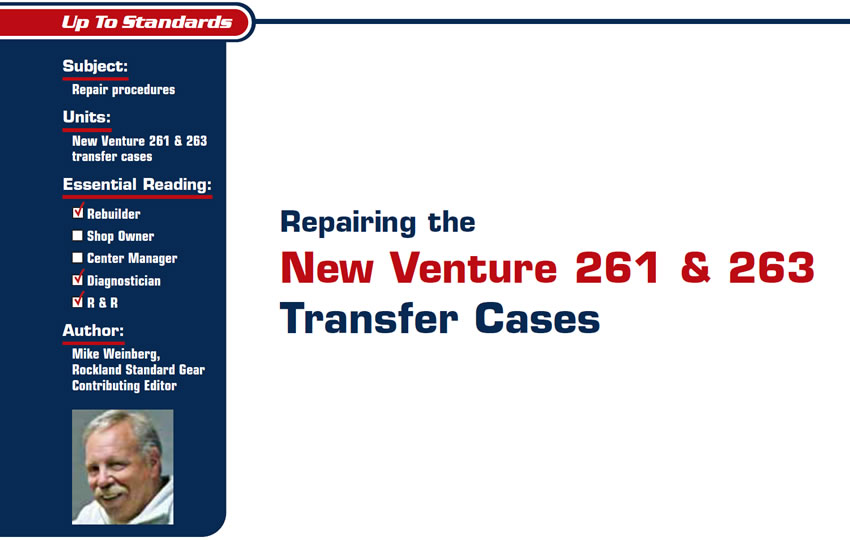
Theory, Facts and How What You Don’t Know Can Hurt You
To start this off with a bang, transmission repair is now an outdated term. Sure, you work on transmissions, but in reality you are working on a motor vehicle. This vehicle has an engine, a transmission, a driveline, a suspension, brake system, cooling system etc.
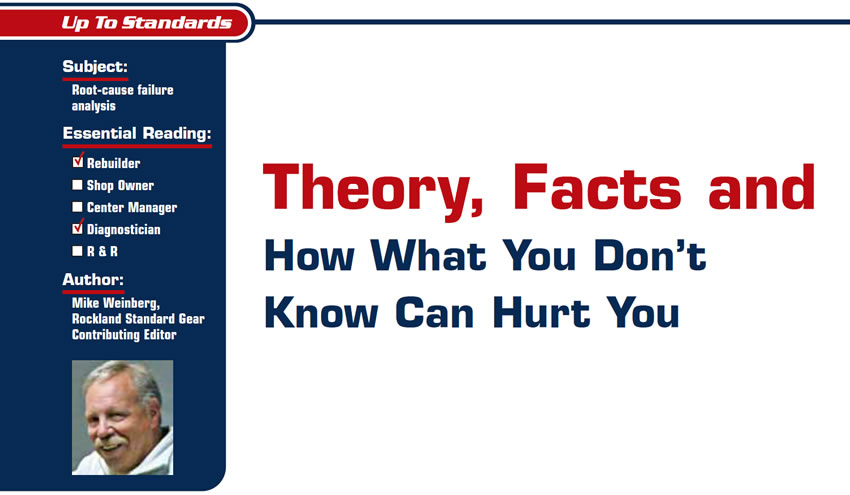
The New Year: It Will Be as Good as We Make It
The “Big Three” domestic automakers are facing the toughest business decisions since the Great Depression. Most of the Tier One OEM suppliers to the domestic market are either in bankruptcy reorganization or have downsized and sold off unprofitable divisions. The unions are in tough shape with plant closings and the movement of domestic manufacturing offshore creating a great loss of jobs. Our industry is intertwined with the automakers, and the times are difficult. It is easy to lose hope, it is easy to throw in the towel, and it is difficult to work out a solution to the present situation.

Where Did the Differential Go?
Traditionally, all motor-vehicle final-drive elements (differentials, or rear ends) have consisted of a ring and pinion, with the ring gear mounted on a differential carrier. The differential carrier contained a set of side gears splined to the drive axles and a set of pinion gears allowing the side gears to rotate at different speeds.
The differential is necessary because the outside wheel on an axle has to cover more distance in a turn than the inside wheel. This means that the outboard wheels must rotate faster than the inboard wheels; hence, the “differential” in wheel speed.
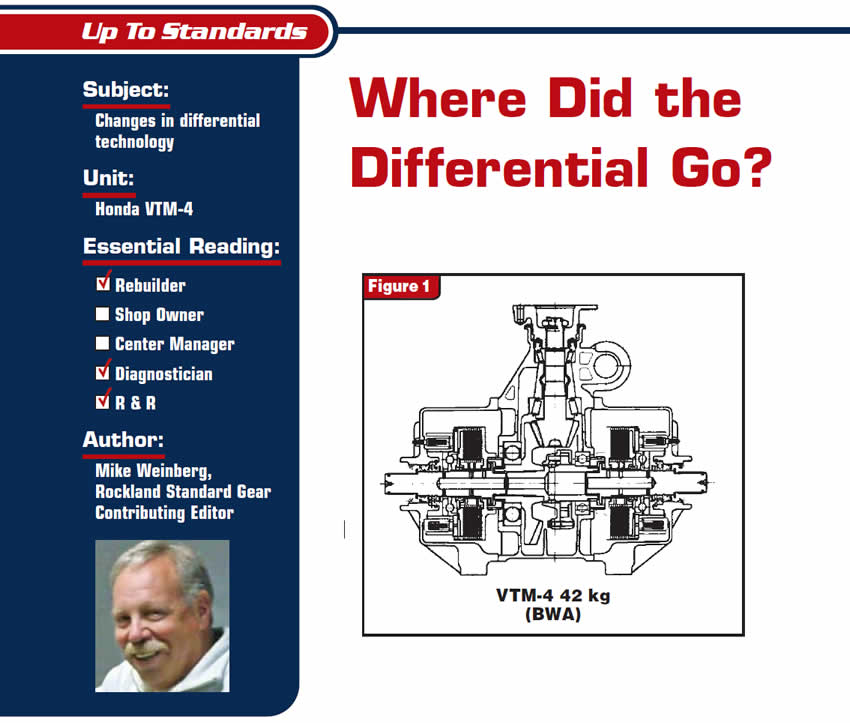
The Great Unknown
Replacing parts is the last step in the repair process. The first step should be a methodical diagnosis to isolate the cause of the malfunction. This is not possible unless you understand how the component you are working on is supposed to operate and how it is related to the other systems that make up the modern motor vehicle.
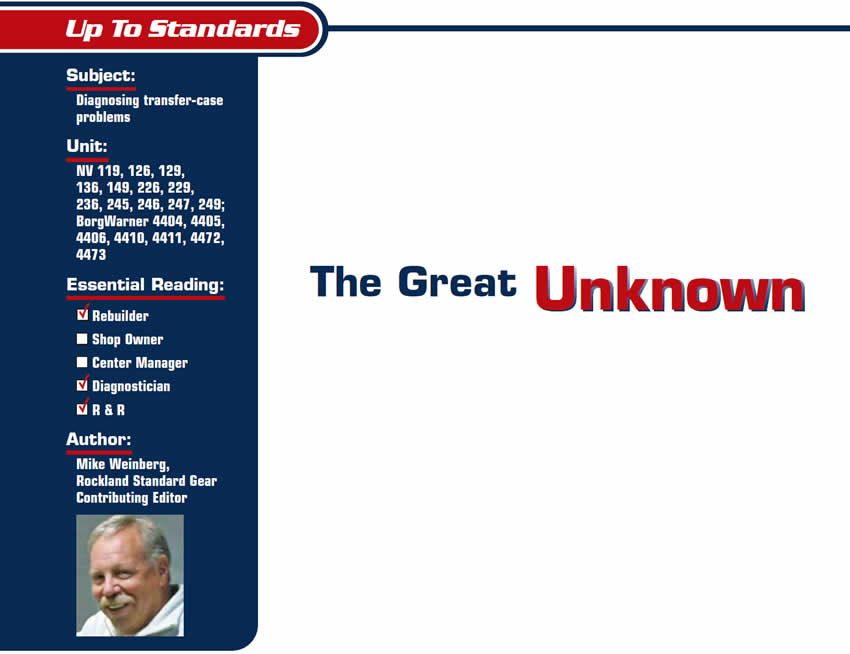
Myths and Mysteries: The Top 15 Tech Calls Involving Transfer Cases
The first consideration for anyone in the automotive-repair business must be customer satisfaction, as the best advertising is the word of mouth generated by happy customers. As a buyer of parts you also should be concerned with customer satisfaction, since you are the customer. One of the necessities of this increasingly complex business is that your vendors supply you with not only quality parts but also technical help to ensure your success in diagnosing and repairing the unit you are working on. This article covers the 15 most-frequent transfer-case inquiries that we receive on the tech line, with No. 1 being the most-commonly asked question.

A Look at the New Venture 244 Gen II Transfer Case
We have become used to a never-ending stream of new technology and the introduction of many new models of transmissions and transfer cases. I remember the days when we had only about 20 transmissions to worry about and roughly a half dozen transfer cases; now, you need a computer to keep track of all the different units.
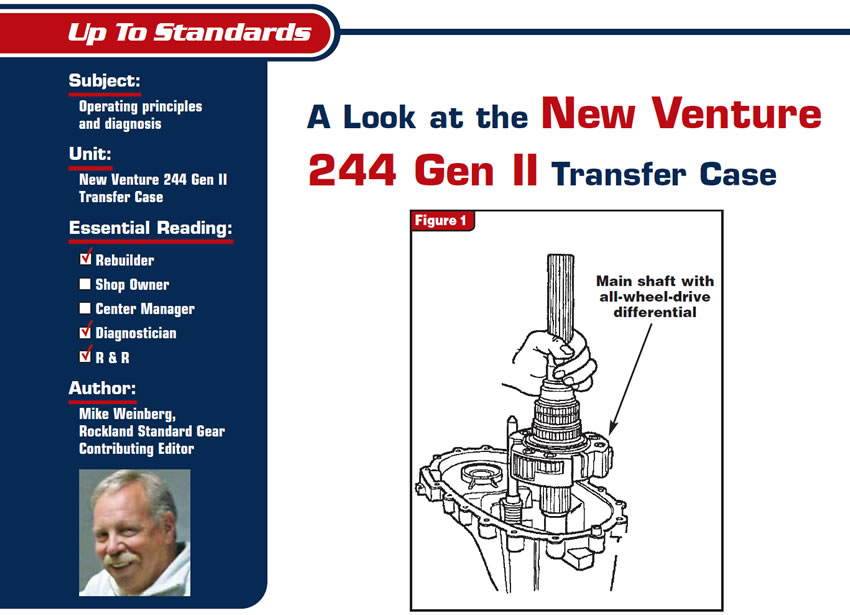
Worldwide Conditions and New Transmission Technology
With the technological advances of the past 100 years the world has become smaller. Fax machines, the Internet, cell phones and the globalization of industry have created a business climate that is evolving at an incredibly rapid pace.
